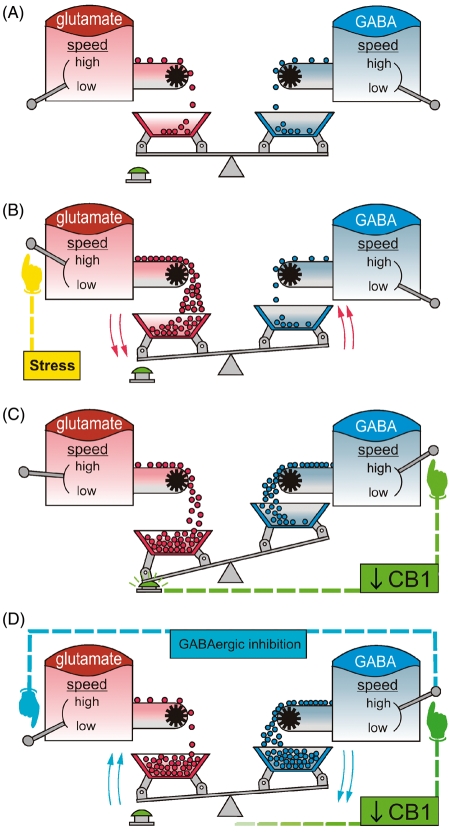Figure 1.
Proposed model for the stress induction of cannabinoid type 1 (CB1) receptor-mediated adaptation, associated with the emotional regulation exerted by the endocannabinoid system (ECS). Among the plethora of neurotransmitters implicated in processing of emotions, glutamatergic (left) and GABAergic (right) systems play a central role in the regulation of anxiety. (A), Under basal conditions, the equilibrium between excitatory and inhibitory transmission provides an appropriate emotional reactivity. (B), Stressful experiences are characterized by enhancement of the glutamatergic tone, which leads to an unbalance between excitatory and inhibitory transmission. (C), The CB1 receptors on GABAergic terminals represents a dynamic element of the ECS that can be expressed at a higher or lower level, depending on the characteristics of the stimuli. The overexcitation induced by stressful stimuli triggers CB1 receptor downregulation exclusively on GABAergic terminals, which eventually modifies the balance between GABAergic and glutamatergic CB1 receptor activation by endocannabinoids. (D), This long-lasting CB1 receptor downregulation on GABAergic terminals leads to a persistent increase in the strength of GABAergic inhibition of the glutamatergic transmission. This model represents a precise buffer system for the homeostasis of emotions.

